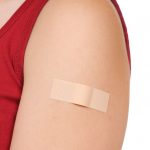Suboxone & The 12-Step Programs
Unless you’ve been studiously avoiding all TV, press and even social media for the past couple of years, you are likely aware that our country is in the throes of an opioid epidemic that is affecting millions of people.
In 2017 alone, more than 47,000 people died as a result of opioid overdose and this is not including the many more addicts who die in accidents while high or who are hospitalized due to their drug abuse.
Suboxone is one of the medically approved drugs used to treat opioid addiction, but there are some who protest it. This includes many people who are in 12-step programs. Some believe that suboxone and the 12 steps don’t mix, but this couldn’t be further from the truth. Just because you’re on suboxone treatment does not mean that you can’t participate in the 12-steps. Suboxone is the most effective way of managing opioid addiction that has been approved for use yet.
Here we discuss some of the arguments against it and why taking Suboxone is not just replacing one drug with another. You need to be confident in your opioid treatment decision.
Don’t Let Anyone Tell You that You’re Not Clean and Sober
When you are addicted to pain medication or heroin, or any opioid, it is likely that taking the drug and focusing on where to get more of it is a central part of your existence. On Suboxone, this simply isn’t the case. You can function; without the dope sickness that occurs when you stop taking opioids.
Those who tell you that you’re not clean and sober when you’re taking the medication may not have a thorough understanding of how it works. The medication is designed to reduce withdrawal symptoms without the characteristic euphoric effects, which means you don’t feel the extreme highs and lows of opioid abuse.
The Difference Between Suboxone Addiction & Dependence
There’s a huge difference between taking Suboxone to maintain your sobriety and struggling through each day thinking only about the drug that rules your life.
Detoxification and therapy may not be enough for every patient. For many people, sheer abstinence is near impossible to maintain, which often lead to higher overdose rates when people relapse. Medically assisted treatment is lifesaving and helps patients transition to a healthier lifestyle.
Being clean and sober means waking up and not being addicted to a substance. Suboxone lasts longer in your bloodstream, so after the first few days of its use, you don’t need to take it every day.
This allows you to get on with the business of living. Although you may feel some pleasant effects associated with the drug,it’s not the same as a high you get with heroin.
Everyone’s Recovery Is Different
Just as people choose different jobs, people also end up on different paths to recovery. There’s no right or wrong way to stay clean. The point is to find something that works for you.
There have been some studies of Suboxone use in conjunction with the 12-step programs, and while medication-assisted treatment works for many people, Narcotics Anonymous has been known to disapprove of it. These groups may not be effective for the addicted person who’s chosen medically assisted treatment.
However, many support groups are available that do accept this method of recovery. Thousands of people are prescribed methadone for recovery and this maintenance program has been proven effective, however; it doesn’t align with the philosophy of every support group.
Find a 12-Step Sponsor That Understands Suboxone Treatment
Your sponsor is a vital source of support to have during your recovery. Be sure to find one who understands your chosen method for recovery and is supportive; an unsupportive sponsor can be detrimental to your recovery.
People who haven’t been addicted to drugs shouldn’t look down on you, nor should you look down on anyone else’s choice of treatment. Recovery programs should be a safe space for all and should welcome those pursuing any kind of treatment.
A huge danger in recovery is the chance of relapse and overdose. For several reasons, Suboxone reduces these chances.
Firstly, because it is a partial opioid agonist, cravings are non-existent, so people are less likely to seek out other opioids.
Secondly, the chances of overdose are much lower on Suboxone itself, as it doesn’t have the same level of risk for respiratory depression as other opioids.
How MAT Stigma Makes People Feel About Themselves and Their Recovery
Stigma about medically assisted therapy (MAT) is very damaging. The fact is that MAT lowers the rate of overdose by around 50%.
Suboxone offers hope to addicted people who’ve been previously unsuccessful in achieving long-term recovery. They may have tried abstinence, as well as detox and cognitive behavioral therapy (CBT); this may be their fifth attempt at trying to give up pain medication or they may be trying to get off street drugs.
Not having access to Suboxone is often perceived as just another dead end to them, in a life that seems full of them. When someone using Suboxone and the 12 steps is told at a meeting that it’s not the right thing for them to do, then it may seriously harm their recovery.
If they quit Suboxone, they will go into withdrawal and the cravings will resume, just as severely as before.
The fact is that the stigma of medically assisted therapy means that people are dying. Celebrity deaths such as Mike Starr, former bassist of Alice in Chains, show the dangers of restricting access to medically assisted therapy.
Suboxone should be seen as a medication that is central to your recovery; a lifeline rather than a hindrance. Those who accept how complex addiction is often understand this.
Myths that surround its use do not help anyone recover and can even prevent people from receiving treatment.
The Big Picture
Those who are against Suboxone haven’t fully grasped the concept that this medication regulates the brain chemistry, and are simply looking at it as another opioid. Any addict chasing a high isn’t going to seek out Suboxone. Not only is it harder to get than other opiates, but also its ceiling effect means that you can’t get the same high, and the naloxone in the drug means that you’ll go into withdrawal if you decide to inject or snort it.
This reduces overdoses and the spread of infectious diseases because people aren’t relapsing as often as they would be if they quit cold turkey.
With Suboxone being relatively new to the market, further education may be needed for addiction medicine professionals, including those in world-renowned support groups, as well as medical professionals.
They simply may not understand that the medication saves lives and increases the likelihood of long-term recovery, which is the goal of addiction treatment. From its origins in the 1970s to recent studies, this wonder drug is letting people live clean, sober, happy lives while managing their disease with less risk of relapse and overdose.




Leave a Reply
Want to join the discussion?Feel free to contribute!